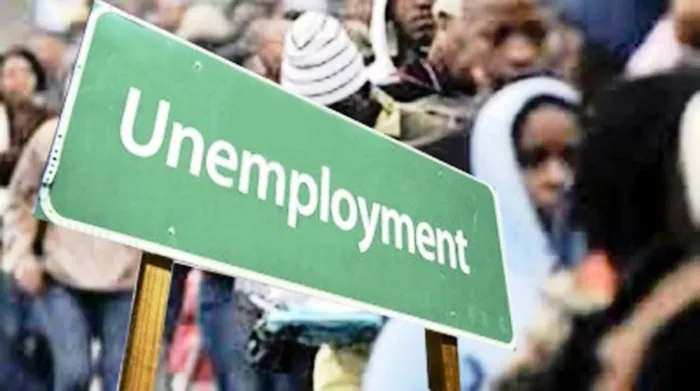The real story behind South Africa's unemployment figures

South Africa's unemployment rate has risen to 32.9%.
Image: File
SOUTH Africa’s unemployment rate is a lightning rod for political debate, economic anxiety, and public frustration. In the wake of Capitec CEO Gerrie Fourie’s claim that the “real” unemployment rate is closer to 10%, far below Statistics South Africa's official 32.9%, the national conversation has reignited.
Critics of Statistics South Africa (StatsSA) suggest that the official figures are not just technical measures but political artefacts that erase the economic activity of millions in the informal sector. But does this criticism stand up to scrutiny? The answer is more nuanced than the headlines suggest.

Capitec CEO, Gerrie Fourie.
Image: Supplied
Why Would Anyone Overstate Unemployment?
Let’s start with the most provocative claim: that StatsSA and the government have a motive to overstate unemployment. This accusation defies both political logic and institutional practice. High unemployment is a political liability, not an asset. It invites criticism, undermines investor confidence, and puts government performance under the microscope. If there were any incentive, it would be to understate the problem, not exaggerate it. A trend we see in a number of African countries where the official unemployment rates are so low they defy logic and reality.
StatsSA is an independent institution that, while not perfect, has a lot of credibility. Its data is scrutinised by economists, international agencies, and the media. Any manipulation or systematic bias would be quickly exposed by these watchdogs. In reality, the agency’s credibility depends on its objectivity and adherence to global standards.
Does StatsSA Ignore Informal Work? The Evidence Says No
A central argument in the current debate is that StatsSA’s methodology “renders millions invisible” by failing to count informal work. This is simply not true. StatsSA’s Quarterly Labour Force Survey (QLFS) is designed to capture all forms of work, including informal jobs, self-employment, and unregistered businesses. The QLFS asks about any activity, formal or informal, that brings in income, whether it’s selling vetkoek, running a backyard salon, or hustling as a car guard. If you worked for at least an hour in the reference week, you’re counted as employed.
Both current and former statisticians-general have clarified that informal work is counted, as required by the International Labour Organisation (ILO) standards. Recent Stats SA research confirms that the informal sector employs about 19.5% of the workforce, nearly one in five jobs. This includes street vendors, home-based businesses, and unregistered enterprises, all of which sustain households and fuel local economies.
Comparing Apples and Oranges: International Context
The arguments supporting Fourie’s claims point to countries like India, Brazil, and Zimbabwe, where unemployment rates are low despite massive informality, and suggest South Africa is an outlier. But this comparison ignores key differences:
Economic Structure: South Africa’s informal sector is smaller than in many developing countries, partly due to regulatory and historical factors. In India, almost any economic activity, no matter how marginal, is counted as employment, even if it’s not enough to survive on.
Definitions Matter: Some countries use looser criteria for employment, counting sporadic or survivalist activity as work. South Africa’s approach is more rigorous, aiming to distinguish between meaningful employment and mere survivalism.
Policy Hostility: South Africa’s informal sector faces regulatory barriers, policing, and licensing bottlenecks that suppress its growth, unlike in countries where informality is the norm and often the only option.
Is the Quarterly Unemployment Report Flawed?
StatsSA’s quarterly unemployment report is not methodologically flawed. There is also no evidence that it is politically manipulated. The agency publishes detailed methodological notes, welcomes peer review, and its data aligns with other indicators of economic hardship, like sluggish GDP growth, high poverty, and social grant dependency. If millions of informal workers were being missed, we’d see glaring inconsistencies elsewhere, which we do not.
The QLFS is transparent about its limitations and is constantly evolving. For instance, the latest data shows that while formal sector employment decreased, informal sector employment actually increased by 17,000 in the first quarter of 2025. This demonstrates that informal work is not only counted but also tracked over time.
The Real Issue: Structural Barriers, Not Statistical Tricks
The real challenge is not statistical invisibility but structural exclusion. South Africa’s informal sector is not as robust as in other developing countries. Regulatory barriers, monopolistic competition, and a lack of support mean that informal work is often precarious and low-paid. The country’s economic structure is dominated by large corporations, making it hard for micro-enterprises to thrive.
Even where state policy recognises informal activity, it rarely dismantles the barriers that prevent informal traders from scaling up. The shift in informal enterprises toward home-based operations and the stagnation of licensing reveal a sector that is surviving under constant threat, not thriving.
Hybrid Measurement: A Welcome Innovation, Not a Silver Bullet
Calls to supplement survey data with financial transaction records and digital platform data are valid and should be explored. Capitec’s own data on township transactions could offer valuable insights. But these are refinements, not fundamental corrections. The current statistics are not a “mirage”; they are a sober reflection of a society where too many are locked out of meaningful work, formal or informal.
Let’s Fix the Economy, Not the Messenger
It is true that black South Africans face disproportionately high unemployment rates and that the legacy of apartheid continues to shape economic opportunity. But this is not the result of statistical erasure; it is a reflection of structural realities. StatsSA’s data exposes these inequalities; it does not create them.

Nco Dube a political economist, businessman, and social commentator.
Image: Supplied
South Africa’s unemployment crisis is real and demands urgent action. Blaming Stats SA or accusing it of political manipulation without any evidence distracts from the real work: breaking down the barriers that keep so many out of the economy. The numbers are not the real problem. The problem is what the numbers reveal: a country where opportunity remains out of reach for millions.
Let’s focus on fixing that, not on chasing statistical ghosts. The debate about how we measure work is important, but it must be grounded in fact, not conjecture. Stats SA’s unemployment figures are not a political artefact; they are a call to action.
(Dube is a political economist, businessman, and social commentator on Ukhozi FM. His views don't necessarily reflect those of the Sunday Tribune or IOL. Read more of his articles here: www.ncodube.blog)
Related Topics: